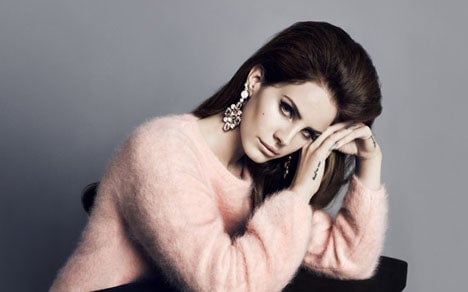Stretchers, shears and tiny bunny screams—making that angora sweater is rarely pretty
Swedish retailers H&M and AB Lindex and Denmark’s IC Companys have ceased production of angora products in response to a PETA campaign showing videos of rabbits at angora farms in China screaming in pain as their fur is torn off.

Swedish retailers H&M and AB Lindex and Denmark’s IC Companys have ceased production of angora products in response to a PETA campaign showing videos of rabbits at angora farms in China screaming in pain as their fur is torn off.
H&M said in a statement it would step up inspections before selling angora again, and that the company only sells products “made of angora rabbit hair from farms with good animal husbandry.” Customers are welcome to bring back their H&M angora products for a full refund, the company said. AB Lindex and IC Companys have banned the use of the material.
The soft, light, warm yarn has rotated in and out of fashion for generations. American women in the 1950s stored their angora sweaters in their refrigerators to keep them fuzz-free and the French wore angora products as far back as the 1700s. China has dominated the angora production business for decades, after overtaking France in the 1960s, and now provides more than 90% of the fiber used to make everything from sweaters to underwear. Low labor costs and the “sub-standard nature” of China’s angora farms helped this rise, this Australian analysis of the industry (pdf) says.
Even when live rabbits aren’t being obviously traumatized like the ones shown in the PETA videos, angora production is rarely pretty. Why’s that? Because harvesting angora fibers to be spun into yarn inevitably involves removing the fur from live rabbits. Some farms, like this one (video below) in New Zealand don’t pluck the rabbit’s hair, but tie their feet, stretch them and shear them with electric clippers:
In France the method of harvesting angora was traditionally plucking—albeit after the rabbits have eaten a chemical depilatory that makes it easier to remove the hair—in a process that’s spread over several days to “minimize stress on the rabbit,” according to “Rabbit Production,” a book on the topic reissued in May:
On the first day, all of the wool on the lower halves of the flanks of the rabbit is removed by grasping a tuft of wool between the thumb and the edge of a plucking knife…Over the period of a week, sections of the wool are removed until only the top of the back is covered with a cap of protective wool.
In the the US, the bunnies aren’t fed a depilatory and “coats are often removed in one session by pulling tufts between the thumb and index finger.” China’s angora production seems to take that several steps further, PETA observed: Workers were “violently ripping the fur from the animals’ sensitive skin as they screamed at the top of their lungs in pain,” after which the rabbits “appeared to go into shock, lying motionless inside their tiny, filthy cages.”
For angora fans who are turned off by these harvesting methods, there is another way. A cottage industry of “cruelty-free” angora has sprung up, with small-scale angora breeders who recommend either gentle brushing or careful, slow shearing.